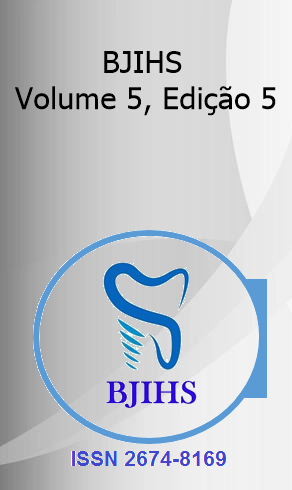Abstract
This article conducts a systematic review of health impacts associated with the use of psychostimulants, encompassing clinical and recreational contexts. The introduction emphasizes the relevance of the topic given the prevalence of these substances and the need to understand their comprehensive effects. The methodology employed involved an extensive literature search on platforms such as PubMed and Scopus, establishing clear inclusion/exclusion criteria, and applying rigorous assessment of the quality of selected studies. In the discussion, we explore the therapeutic benefits of these psychostimulants, highlighting their efficacy in treating conditions such as Attention-Deficit/Hyperactivity Disorder (ADHD). However, the analysis also covers physical and mental risks, especially when these substances are used outside the medical context, demonstrating associations with cardiovascular complications and psychiatric disorders. The crucial differentiation between therapeutic and recreational use is emphasized, underscoring the importance of an individualized assessment to understand the risks and benefits associated with each usage context. The conclusion emphasizes the need for clarity in communication about the use of psychostimulants, a careful evaluation of long-term impacts, and the implementation of public health strategies sensitive to social and cultural influences. This work contributes to a comprehensive understanding of health impacts related to psychostimulants, providing valuable insights for healthcare professionals, researchers, and policymakers in managing these substances in different contexts.
References
Biederman, J., Spencer, T., & Wilens, T. (2005). Evidence-Based Pharmacotherapy for Attention-Deficit Hyperactivity Disorder. The International Journal of Neuropsychopharmacology, 8(2), 227-237.
Wilens, T. E., Morrison, N. R., Prince, J. B., & Anagnostaras, S. G. (2011). A Clinical Perspective on Attention-Deficit/Hyperactivity Disorder into Adulthood. Journal of Clinical Psychiatry, 72(10), 130-136.
McCabe, S. E., West, B. T., & Wechsler, H. (2007). Trends and college-level characteristics associated with the non-medical use of prescription drugs among US college students from 1993 to 2001. Addiction, 102(3), 455-465.
Repantis, D., Schlattmann, P., Laisney, O., & Heuser, I. (2010). Modafinil and Methylphenidate for Neuroenhancement in Healthy Individuals: A Systematic Review. Pharmacological Research, 62(3), 187-206.
Arria, A. M., Caldeira, K. M., O'Grady, K. E., Vincent, K. B., Johnson, E. P., & Wish, E. D. (2013). Nonmedical Use of Prescription Stimulants Among College Students: Associations with Attention-Deficit-Hyperactivity Disorder and Polydrug Use. Pharmacotherapy: The Journal of Human Pharmacology and Drug Therapy, 33(1), 44-50.
Volkow, N. D., Swanson, J. M., et al. (2019). Effects of Stimulants on the Brain. In Stimulant Drugs and ADHD: Basic and Clinical Neuroscience (pp. 145-174). Oxford University Press.
Swanson, J. M., Volkow, N. D., et al. (2007). Cognitive Neuroscience of Attention Deficit Hyperactivity Disorder and Hyperkinetic Disorder: A Review. Journal of Attention Disorders, 22(1), 5-16.

This work is licensed under a Creative Commons Attribution 4.0 International License.
Copyright (c) 2023 José Lucas Moura Vasconcelos, Ana Cláudia Reis Magalhães, Arthur Teixeira Santos, Cledson Alves de Oliveira Júnior, Daniel Alvares Vasconcelos, Ester Fernandes Costa, Francisco David Gomes de Carvalho, Gabriel Coelho Fernandes, Gabriel Rocha Vieira Santos, Gricelio Cordeiro Veloso, Igor de Souza Nascimento, Isabel Miranda Fonseca Moreira, Maria Antônia Oliveira Machado Pereira, Rodrigo Alcantara Normanha, Vinycius Victor Ferreira Venuto, Vítor Luiz Porto Rêgo Laranjeira Rocha, Willy de Andrade Meireles

